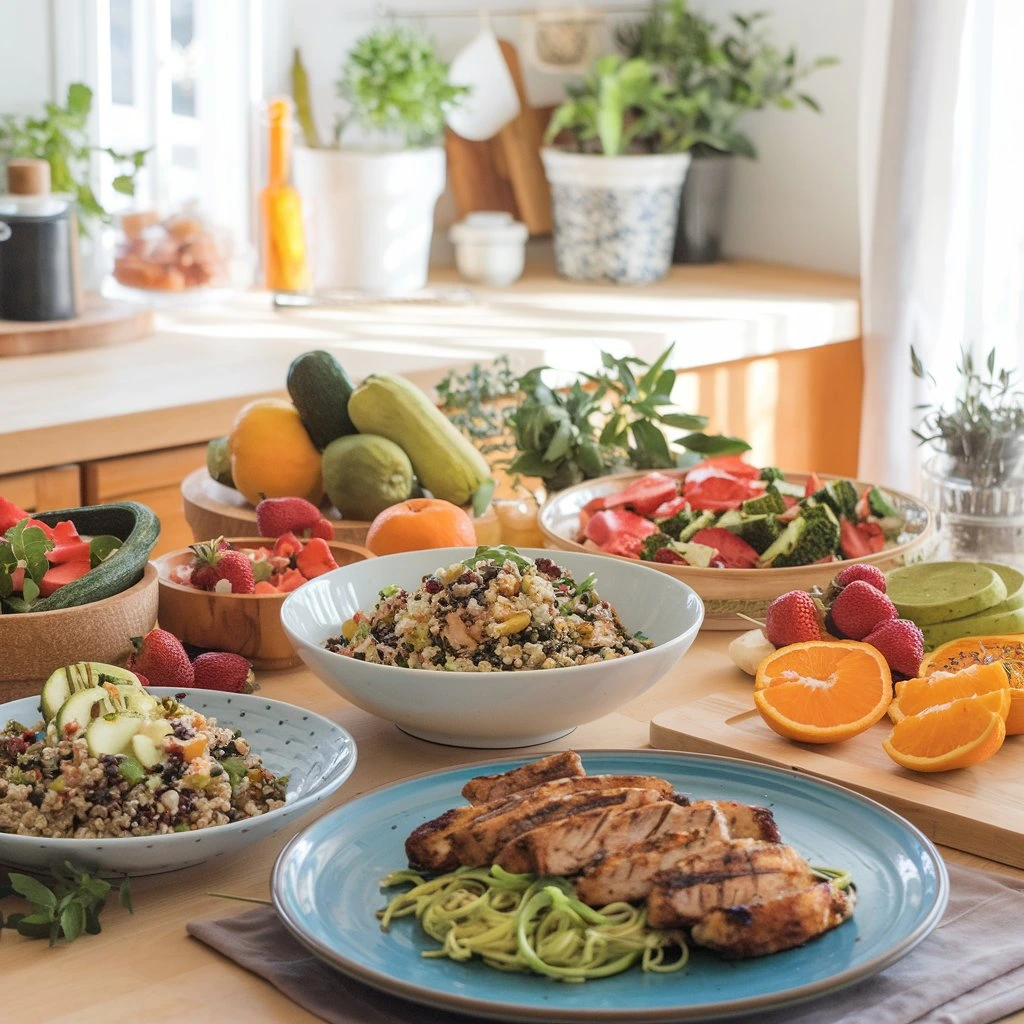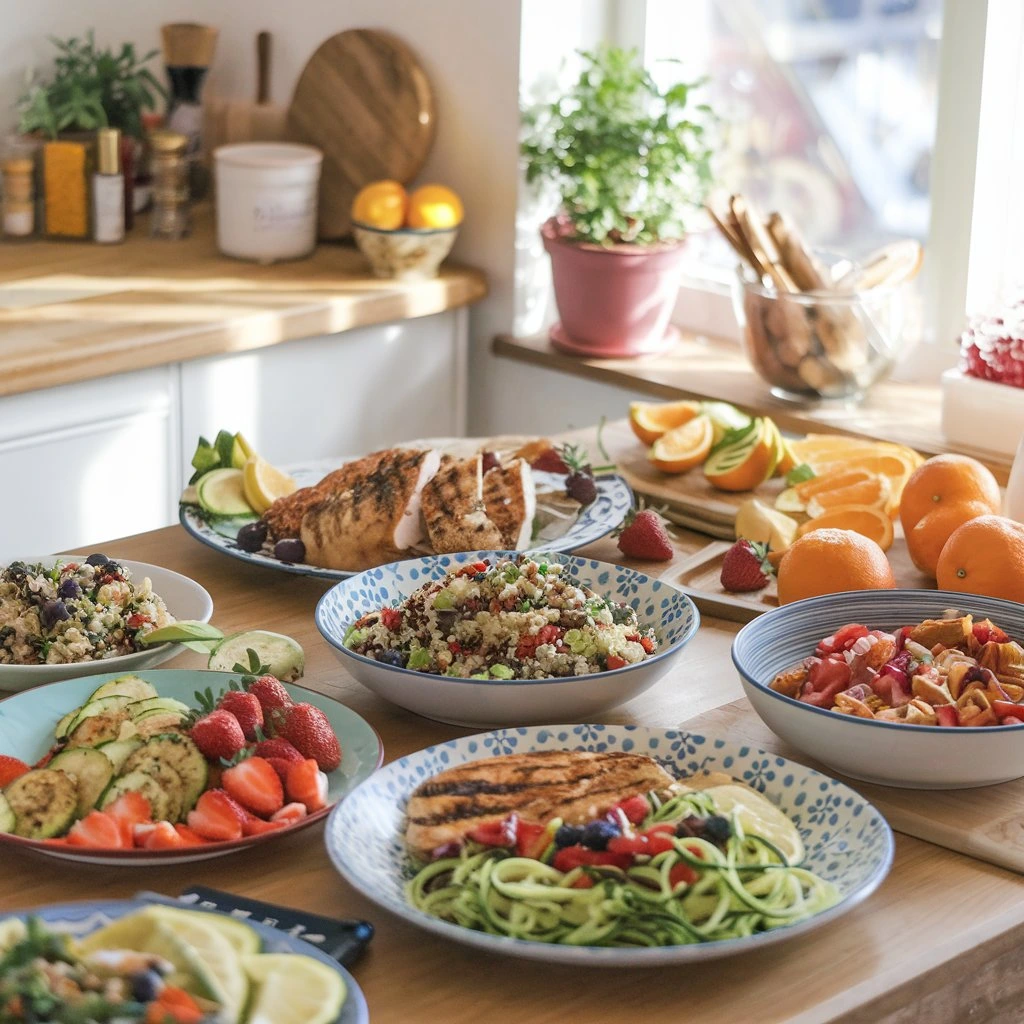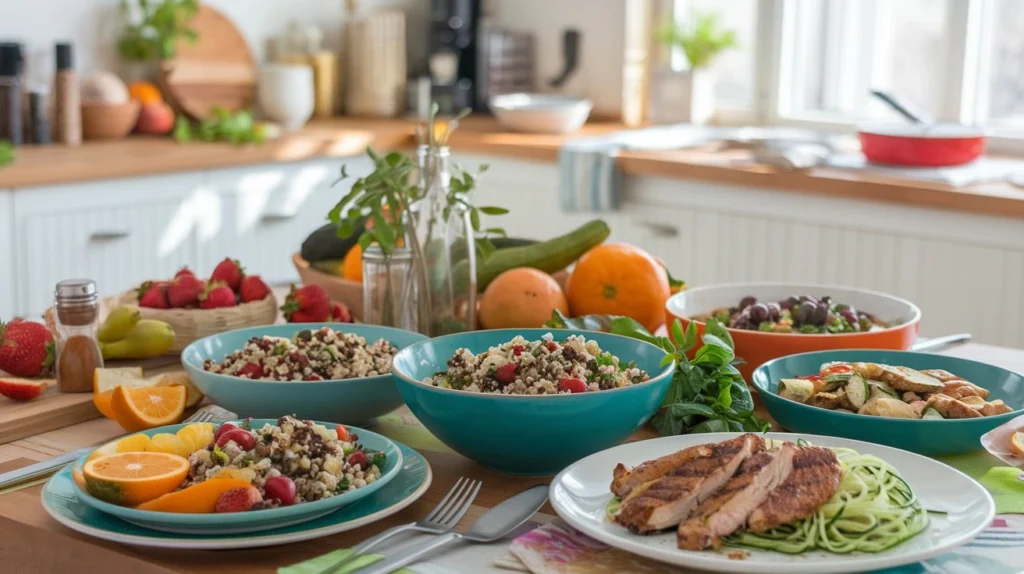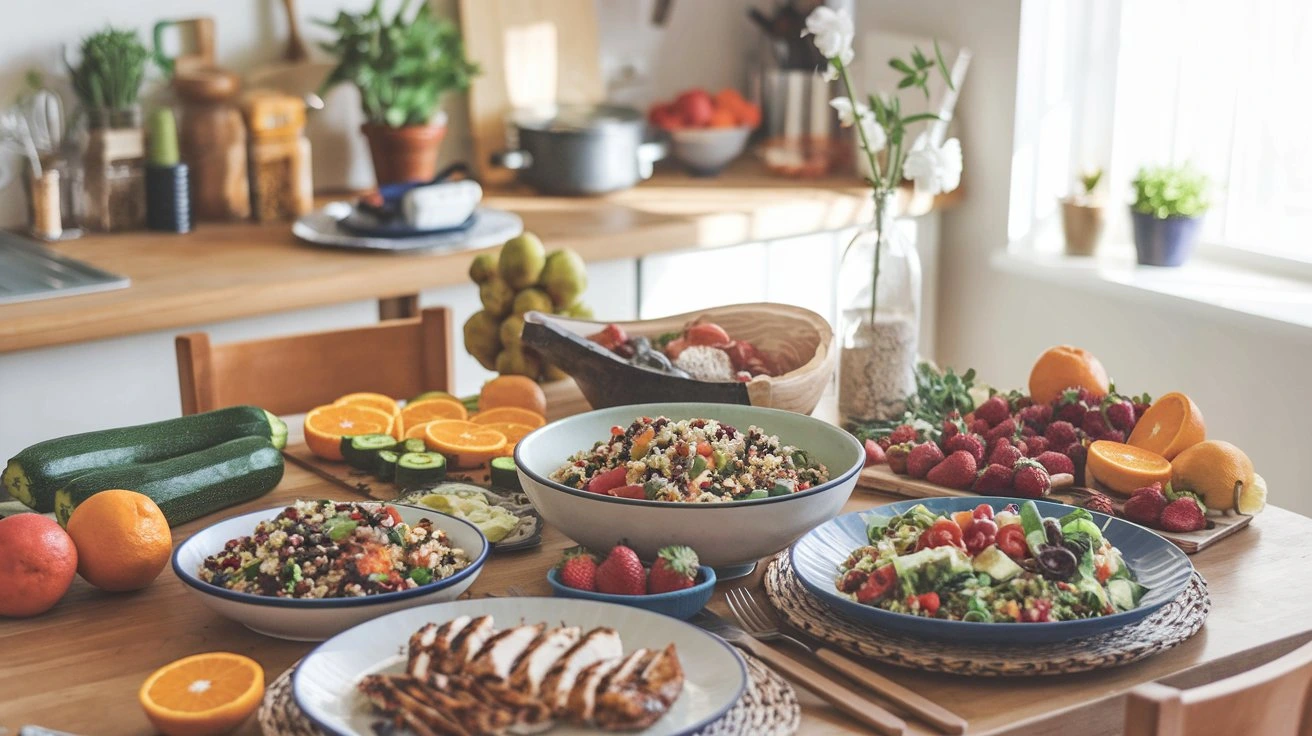Embarking on a new dietary journey can often feel like stepping into uncharted territory. If you’ve recently discovered that a Low FODMAP diet might be your path to better digestive health, you’re not alone. Many individuals find themselves grappling with uncomfortable symptoms, and it can be challenging to navigate food choices that align with your wellness goals.
Imagine the relief of finally finding meals that not only cater to your dietary restrictions but also tantalize your taste buds. You might feel overwhelmed at first, unsure of where to start or how to replace your favorite ingredients. But rest assured, embracing a Low FODMAP lifestyle doesn’t mean sacrificing flavor or enjoyment. Instead, it opens up a world of culinary possibilities that can be both nourishing and satisfying.
In this guide, you will discover a variety of delicious recipes specifically designed for beginners. Each dish is crafted to be simple, allowing you to gain confidence in the kitchen while also exploring new flavors. You’ll learn how to make informed choices about ingredients, ensuring that every meal you create is a step toward better gut health.
So, let’s dive in together. You’re not just changing your diet; you’re starting a journey towards a happier, healthier you, one delicious recipe at a time.
Table of Contents
Understanding the Low FODMAP Diet
What Are FODMAPs?
To navigate your new dietary landscape, it’s essential to grasp what FODMAPs are. FODMAP means sugars that can be fermented, including oligosaccharides, disaccharides, monosaccharides, and polyols. These are specific types of carbohydrates that can be difficult for some people to digest, leading to uncomfortable symptoms such as bloating, gas, and abdominal pain.
When you consume foods high in FODMAPs, they can draw water into your intestines and ferment in your gut, causing these unwanted reactions. Understanding which foods fall into this category is vital for managing your digestive health effectively.
The Impact on Digestion
As you delve deeper into the Low FODMAP diet, you may start noticing how certain foods affect your body. For many, high FODMAP foods can trigger gastrointestinal issues, especially for those with irritable bowel syndrome (IBS). By learning to identify and limit these foods, you can significantly alleviate discomfort and improve your overall well-being.
Recognizing the symptoms that arise from FODMAPs allows you to make more informed choices. It’s not just about what you eat; it’s about understanding how your body responds. This knowledge empowers you to create a diet that supports your health, making mealtime a more enjoyable experience.
The Benefits of Following a Low FODMAP Diet
You might wonder what benefits await you on this dietary path. One of the primary advantages of adopting a Low FODMAP diet is the potential for symptom relief. Many individuals report a noticeable decrease in bloating, gas, and digestive distress after making these changes.
Moreover, this diet encourages you to explore a wider range of foods. You’ll discover new ingredients and flavors that you might not have considered before. As you experiment in the kitchen, you’ll find that cooking can be a joyful and creative outlet, rather than a chore.
Finally, embracing a Low FODMAP lifestyle contributes to long-term gut health. By focusing on what your body needs and eliminating what it doesn’t tolerate, you set the foundation for improved digestion and overall wellness. This journey isn’t just about restriction; it’s about empowerment and taking control of your health through informed dietary choices.
By understanding the fundamentals of the Low FODMAP diet, you can confidently navigate this new chapter, transforming your relationship with food and your body.
Essential Ingredients for Low FODMAP Cooking
Must-Have Low FODMAP Staples
As you embark on your journey into Low FODMAP cooking, stocking your kitchen with the right ingredients is crucial. Knowing which foods to keep on hand will make meal preparation smoother and more enjoyable. Here’s a breakdown of essential staples that will help you create delicious dishes without the discomfort.
Grains
When it comes to grains, you have several options that are friendly to your digestive system. Rice, especially brown and white varieties, is a versatile base for many meals. Quinoa is another excellent choice, offering a nutty flavor and a boost of protein. Additionally, gluten-free oats can be a great breakfast option, providing fiber without the FODMAPs that wheat-based products may contain.
Fruits
Fruits can be tricky, but there are plenty of delectable options that fit within the Low FODMAP framework. Bananas, particularly when they are still slightly green, are a great snack. Oranges and strawberries are refreshing and can easily be added to breakfast bowls or salads. Always remember to check portion sizes, as some fruits can become high in FODMAPs if consumed in excess.
Vegetables
Vegetables are a cornerstone of any healthy diet, and the Low FODMAP diet is no exception. Focus on carrots, bell peppers, and spinach as your go-to choices. These vegetables are not only nutritious but also versatile, allowing you to incorporate them into a variety of dishes. When shopping, pay attention to how you prepare them, as cooking methods can also affect digestibility.
Proteins
Your protein sources can significantly impact how you feel. Chicken, fish, and eggs are excellent low FODMAP options. They are easy to prepare and can be seasoned in countless ways to keep your meals interesting. If you’re looking for plant-based proteins, consider tofu and ** tempeh**, which can be great additions to stir-fries or salads.
Dairy Alternatives
If you’re accustomed to dairy but need to avoid lactose, there are plenty of alternatives available. Lactose-free products are a safe bet, and you can also explore options like almond milk or coconut yogurt. These substitutes not only help you avoid discomfort but also bring unique flavors to your meals.
Ingredient Overview Table
| Ingredient | FODMAP Level | Notes |
|---|---|---|
| Rice | Low | Great base for many dishes |
| Quinoa | Low | High in protein and fiber |
| Spinach | Low | Nutrient-rich and versatile |
| Chicken | Low | Lean protein option |
| Almond Milk | Low | Use unsweetened varieties |
Equipping your kitchen with these essential ingredients will empower you to create a variety of meals that are both satisfying and gut-friendly. As you become familiar with these staples, you’ll find it easier to whip up delicious dishes that support your health and well-being. Embrace the exploration of new flavors and combinations, and enjoy the process of cooking with confidence.
Top Low FODMAP Recipes to Try


Exploring new recipes can be an exciting part of your Low FODMAP journey. With the right ingredients, you can create meals that not only cater to your dietary needs but also satisfy your taste buds. Here are some delightful recipes that are perfect for beginners, each designed to be simple and flavorful.
Breakfast Ideas
Overnight Oats with Blueberries
Starting your day with a nutritious breakfast sets the tone for the rest of your meals. For this recipe, combine gluten-free oats with almond milk and a handful of blueberries. Simply mix the ingredients in a jar, seal it, and let it sit in the fridge overnight. In the morning, you’ll have a quick, delicious meal waiting for you. This dish is not only easy to prepare but also packed with fiber to keep you satisfied.
Egg and Spinach Scramble
For a warm breakfast option, try an egg and spinach scramble. Whisk together a few eggs and pour them into a heated skillet. Add fresh spinach and allow it to wilt as the eggs cook. For a touch of creaminess, sprinkle in some lactose-free cheese. This meal is high in protein and can be prepared in under 10 minutes, making it an ideal choice for busy mornings.
Lunch Options
Quinoa Salad with Grilled Chicken
For lunch, a quinoa salad with grilled chicken is a fantastic choice. Cook your quinoa according to the package instructions and let it cool. Meanwhile, grill some chicken breast seasoned with herbs. Once everything is ready, toss the quinoa with diced cucumbers, cherry tomatoes, and a light olive oil dressing. This salad is refreshing and can easily be made in larger batches for meal prep.
Rice Paper Rolls
Rice paper rolls are not only fun to make but also customizable. Soak rice paper sheets in warm water until they become pliable. Fill each sheet with cooked shrimp, lettuce, and shredded carrots. Roll them tightly and serve with a low FODMAP dipping sauce, such as a simple soy sauce or peanut sauce. These rolls are perfect for a light lunch and can be packed with various fillings based on your preferences.
Dinner Recipes
Zucchini Noodles with Tomato Basil Sauce
For dinner, consider making zucchini noodles topped with a fresh tomato basil sauce. Use a spiralizer to create zucchini noodles and sauté them in a pan until just tender. For the sauce, simmer canned tomatoes with fresh basil and seasonings. This dish is low in carbs and high in flavor, making it a satisfying way to enjoy a classic favorite.
Baked Salmon with Roasted Vegetables

A simple yet elegant dinner option is baked salmon paired with roasted vegetables. Season salmon fillets with herbs and lemon, then bake them in the oven alongside a mix of carrots and bell peppers drizzled with olive oil. This meal is packed with omega-3 fatty acids and essential vitamins, providing a nutritious end to your day.
Snack Ideas
For those in-between meal cravings, consider these quick snacks:
- Rice cakes topped with peanut butter: A crunchy and creamy treat that’s easy to prepare.
- Homemade trail mix: Combine pumpkin seeds, walnuts, and a few pieces of dark chocolate for a satisfying mix.
By trying these recipes, you’ll discover how enjoyable Low FODMAP cooking can be. Each dish is designed to keep your meals varied and exciting while supporting your digestive health. Embrace the flavors and the process, and let your kitchen become a space of creativity and nourishment.
(FAQ)
As you embark on your Low FODMAP journey, it’s natural to have questions. Understanding how to navigate this dietary approach can greatly enhance your experience and success. Here are some common questions you might have, along with helpful insights.
What are the best low FODMAP snacks?
Finding snacks that align with your dietary needs can be a challenge, but there are plenty of tasty options available. Here are some great snacks that are low in FODMAPs:
- Rice cakes with peanut butter: This combination provides a satisfying crunch and a boost of protein.
- Veggie sticks with hummus: Choose low FODMAP veggies like carrots or cucumber, and pair them with a small amount of garlic-free hummus.
- Fruit options: Fresh fruits like bananas, oranges, and strawberries can be enjoyed in moderation.
These snacks not only keep you energized but also help you stick to your Low FODMAP guidelines.
How can I modify recipes to be low FODMAP?
Adapting your favorite recipes to fit a Low FODMAP diet is easier than you might think. Here are some tips to help you modify dishes:
- Substitute high FODMAP ingredients: For example, if a recipe calls for garlic, you can use garlic-infused oil instead, which contains flavor without the FODMAPs.
- Choose lactose-free dairy: When a recipe requires milk or yogurt, opt for lactose-free alternatives to avoid digestive issues.
- Watch portion sizes: Some ingredients may be low FODMAP in small amounts but could become problematic in larger servings. Always check portion sizes to ensure compliance.
By being mindful of ingredient choices, you can enjoy your favorite meals without discomfort.
Are there any low FODMAP cookbooks recommended for beginners?
If you’re looking to dive deeper into Low FODMAP cooking, several cookbooks can guide you through the process. Here are a few highly recommended options:
- “The Complete Low-FODMAP Diet” by Sue Shepherd and Peter Gibson: This book offers a comprehensive guide along with plenty of recipes.
- “The Low-FODMAP Diet Cookbook” by Colleen Francioli: With a focus on simple, easy-to-follow recipes, this book is perfect for those new to the diet.
- “Eating Well on the Low FODMAP Diet” by Tania Flack: This cookbook features a variety of meal ideas and helpful tips for managing FODMAPs.
These resources can provide inspiration and help you feel more confident in the kitchen.
How long should I stick to the Low FODMAP diet?
Initially, the Low FODMAP diet is typically followed for about 4 to 6 weeks. During this time, you’ll eliminate high FODMAP foods to see if your symptoms improve. After this elimination phase, you can gradually reintroduce foods one at a time to identify which types you can tolerate. This systematic approach helps you pinpoint your personal triggers while allowing for a more varied diet in the long run.
Is it possible to eat out while on a Low FODMAP diet?
Dining out can be manageable while on a Low FODMAP diet, though it may require some planning. Here are some tips for choosing food at restaurants:
- Research restaurants in advance: Look for places that offer healthy options and are willing to accommodate dietary restrictions.
- Communicate your needs: Don’t hesitate to inform your server about your dietary requirements and ask for modifications when necessary.
- Choose simple dishes: Opt for grilled proteins and salads with safe vegetables, avoiding sauces and marinades that may be high in FODMAPs.
By being proactive and informed, you can enjoy meals out without straying from your dietary goals.
These FAQs can help clarify your understanding of the Low FODMAP diet and empower you to make informed choices. Remember, this journey is about finding what works best for you while enjoying the process of cooking and eating.
Conclusion
As you wrap up your exploration of the Low FODMAP diet, it’s essential to recognize the empowering journey you’ve embarked upon. Transitioning to this way of eating may initially seem daunting, but it offers the promise of improved digestive health and a renewed connection to food. By understanding the principles of the Low FODMAP diet and discovering a variety of delicious recipes, you have taken significant steps toward a more enjoyable and fulfilling culinary experience.
Keep in mind that being successful depends on trying new things and being flexible. Each recipe you try and each ingredient you incorporate will help you learn more about your body’s responses and preferences. It’s perfectly normal to encounter challenges along the way, but with patience and determination, you can navigate this dietary landscape successfully.
As you continue this journey, don’t hesitate to share your experiences with friends and family. Cooking and enjoying meals together can foster a sense of community and support, making the process even more rewarding. Additionally, as you expand your repertoire of Low FODMAP dishes, you’ll find countless opportunities to enjoy flavorful meals that cater to your needs.
Ultimately, the Low FODMAP diet is not just about restrictions; it’s about discovering new flavors, embracing diverse ingredients, and prioritizing your well-being. Allow your kitchen to become a space of creativity and joy, where you can experiment with various recipes and savor the results. By making informed choices, you’re not only enhancing your health but also celebrating the pleasure of good food.
So, as you move forward, keep an open mind and a willing heart. Your journey is uniquely yours, filled with opportunities for growth and delicious discoveries. Enjoy every bite and relish the newfound freedom that comes with understanding your dietary needs. Happy cooking!
